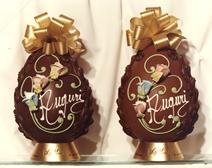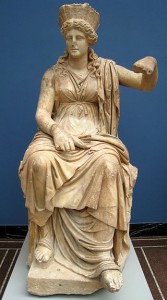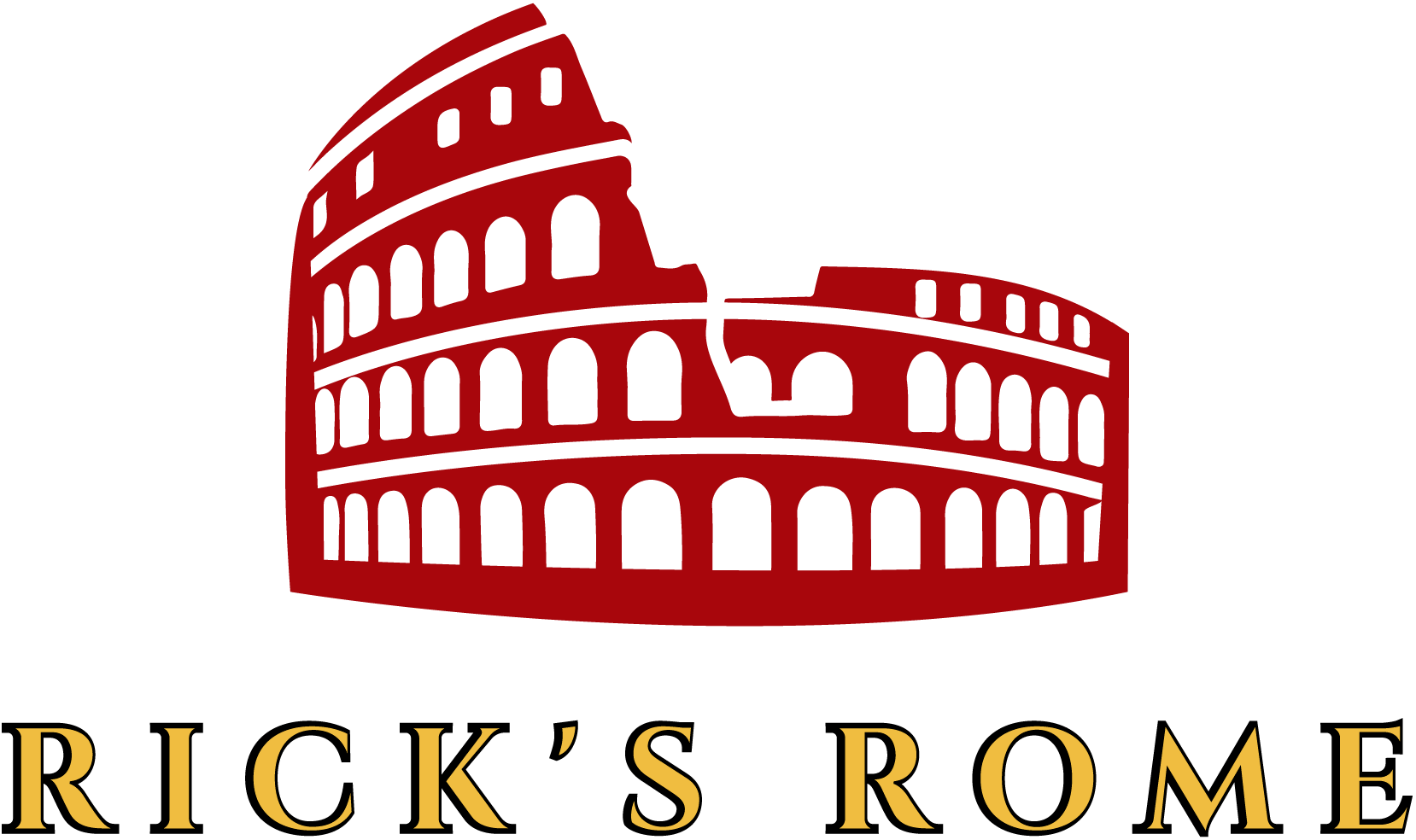Pasqua (Easter) is considered the second most important holiday in Italy after Mother’s Day … I mean, Christmas.
Traditionally, it’s a long weekend culminating in Pasquetta, the “little” Easter (whatever that means) on Monday. If the weather is nice, you spend this day in the countryside having a picnic and drinking wine with your friends.
So for this holiday, you can pretty much do as you’d like. As the Italians say: “Natale con i tuoi, Pasqua con chi vuoi.” (Christmas with your family, Easter with whomever you want). Well, within limits.
Eggs, Bread, and the Body of Christ
Like Christmas and other holidays, Easter in Italy comes with its own food traditions. Lunch is the big meal of the day, and lamb is typically served. And eggs, of course. Symbolism is big in Italian culture, but usually there’s a good bit of wiggle room to make the symbols fit your needs. Eggs can either represent the cycle of life and rebirth (Pagan), or the empty tomb of Jesus (Christian). The “sacrificial lamb,” however, certainly represents the Big J-man. (Seems a bit disrespectful to eat him, though, if you ask me.)
Bread, too, is important, and I remember my own Great-grandmother making a ring-shaped loaf with whole eggs woven into the dough, shell and all. I could never figure out how she did that without the eggs exploding in the oven, or at the very least, getting overcooked to the point of desiccation. They never did, though; it was always perfect, along with everything else that came out of her kitchen.
The chocolate eggs in Italy are truly works of art. Nothing like those Cadbury Eggs filled with a thick sugary syrup made to look like the white and yolk of the egg. Yuck! No, the Italian version is a treat for the eyes as much as the mouth.
I’ve read that the practice of exchanging eggs for Easter can be traced back to the Middle Ages, when it was forbidden to eat animal products during Lent. In later traditions, the eggs were blessed and given to the children as part of a custom called “Benedictio Ovorum,” centuries before the arrival of chocolate in Europe during the late 19th century. Personally, I prefer the modern variety in this case—particularly the modern Italian variety.
Not only are they beautiful and delicious, but they contain a surprise gift inside. The mass-produced national brands contain a little toy or something cute for the children. But you can go to one of the specialty shops and they’ll put whatever you want inside: jewelry, an iPhone, a Fiat 500. You’re only limited by your imagination. (Did I mention that sometimes they’re quite large?)
Valzani
So you see, Italian chocolate eggs aren’t just for amusing the children. Some confectioners have elevated the humble “uova decorate” to an art form. I’m sure everybody has their favorite shop in Rome, but without a doubt Valzani (Via del Moro n.37 a/b) is the most famous.

During the rest of the year, the specialty of this old school pasticceria is their torta sacher. While their pastries are fresh, the décor is not, warping your back in time to when the store opened in 1925.
Valzani must have recently updated their website, which is too bad because the old was so amusing. In any case, have a look around and find the perfect Easter treat for your bambini. But as they say, “The presence of our pastry shop on the Internet represents a conversion to modern technology for making our products known, NOT a conversion to modern manufacturing techniques.” (My translation)
Easter in Italy: Pagan Origins
There are many pagan stories that pre-date the Christian version of a resurrection. In fact, under today’s copyright laws, all four authors of the Gospels would be slapped with legitimate plagiarism suits. Indeed, almost every pagan religion had a major celebration centered on the Vernal Equinox. Many had no fixed date, but rather were determined by the phases of the moon—just like Easter. (Easter is celebrated on the first Sunday after the first full moon of spring, and can therefore vary from March 22nd to April 25th.)

One of the most famous such ancient pagan rites was that of the Cybele cult, which was established (ironically…or not), on Vatican Hill in Rome. Are we seeing some similarities here? Wait, it gets better! Cybele’s lover was called Attis, who was a god born from a virgin mother. He died and rose again every spring. His festival began on “Black Friday,” and concluded with his resurrection exactly three days later.
Hmmm… Must have been a little awkward when that up-and-coming cult—I mean, religion—of Christianity was celebrating their own rites on the same day, in the same city, on the same hill. (Actually, that’s probably not true…the Vatican only became the seat of Catholicism after the papacy returned from its brief relocation in France, from 1309 to 1377. So at least they were likely separated by a few kilometers.)
This isn’t the only example, of course. Let us not forget the Sumerian goddess Ishtar, who was hung naked on a stake, and later resurrected, ascending from the underworld. One of the most ancient resurrection myths is the Egyptian Horus, at least 2,500 B.C. Mithras was born on what we now call Christmas Day, and his followers also celebrated the Vernal Equinox. Even as late as the 4th century A.D., there was Sol Invictus, the official sun god of the late Roman Empire. This was perhaps the last notable pagan sect that the Catholic Church had to conquer in order to claim exclusive rights to the story of resurrection.
It’s Greek to Me
MY favorite version comes from Sicily by way of Greece. To quote the Roman poet Ovid:

“Jutting into the vast ocean with its three cliffs is Trinacris (Sicily), named after its shape. Cool-fresh Arethusa had called divine matrons to a sacred feast; the blonde goddess Demetra came.”
According to the Eleusinian Mysteries, Demetra’s daughter Persephone is captured by Hades, the god of Death, and dragged down to the underworld. He thought he got away with something. Ha! He should have known better. Even I am aware that “Hades has no fury like a Sicilian woman scorned”…especially if you mess with her daughter.
So what does Demetra do? She causes a worldwide drought, depriving people of their food—and consequently depriving the gods of their sacrifices. Finally she strikes a deal with her brother/consort, Zeus, allowing Persephone to return to the Earth every year.
Line 415 of The Homeric Hymn to Demetra, “This was the day [of Persephone’s return], at the very beginning of bountiful springtime.”
Demetra reunites with her daughter, the Earth’s fertility is restored, everything is green again, and mankind is redeemed. Same tale, different characters.
So which version of Spring/Easter/Rebirth/Resurrection do you prefer?
Personally, I’ll take the Greek version. Why, because I believe it’s “the truth?” No, because I think it’s the better story.

Check this Pinterest board on ‘Pasqua’ in Italy featuring Italian ceremonies and regional specialities, including Colomba and pizze: https://www.pinterest.com/ricksrome/pasqua-in-italy/
I am versus the tradition of cook lambs for Easter. I have nothing in cooking sheeps that at least have spent their life (and I can assure you all that roast sheep is good as lamb), but I consider an homicide to slaughter poor lambs, by literally kidnapping them from their mothers and then killing the poor creatures.
Hmmm….if you eat meat, you eat meat…at least that’s what I feel. I know it sounds cruel….but in reality the whole meat eating thing could be considered so.
Buona Pasqua to you and your family! Your daughter is lovely! By the way…loved the post! I am pazzo for history!
Grazieee!!
Pasqua in my Roman host family many years ago in the early 60ies meant going to Anzio and eating mussels, blue mountains of shells that were decorated with lemons all over that town.
They wanted to take me to visit the American cemetery there, but we ate mussels for most of the weekend. My host father, Pietro Sportello ,born in Rome ,skeptical but tolerant of all religions looked upon his religious wife with love and tolerance.
The priest came to their spacious apartment in Monte Mario where I spent many happy days as a young girl and blessed the house, but each room’s blessing meant more lire.
At one one point, Pierro said, basta” and the priest disappeared… and Angela, his wife and he discussed the issue …
long gone…never forgotten, beautiful as you can only experience when you are young and land in such a lovely family
as an exchange student…
Great story! I have heard of many similar encounters with priests for hire. Thanks for reminder…and the smile. Buona Pasqua, Sabine!
Well done!
Grazie!
Your little Godess is beautiful. Happy Easter Rick
Grazie, Lyn. Yes, I just adore her. Happy Easter to you, too, Lyn!
Since it was forbidden to practice Christianity, all Christian Holidays are celebrated at times of the ‘pagan’ holidays, so the customs have ‘merged’. For example, my village celebrates the feast of all souls on Nov 1st which is based on ancient pagan custom (and Demetra returning her daughter!) and has a lot of similarities to the Celtic Samhain. It’s all so interesting!
I am looking forward to my Easter feast of Spezzattino-a sort of baked lamb stew with fennel, asparagus, peas and beaten egg added halfway during the baking. it may sound strange but it is divine! Buona Pasqua
Wow, that doesn’t sound strange…it sounds delicious! But yes, I love all the interesting historical facts that have merged to form our modern customs. Grazie, e Buona Pasqua anche a te!!
I tried to attach a photo -per la tua Bis Nonna- of the ring shaped dough cooked with the egg in the middle. My Mamma and I made them tonight and we call them ‘pizze palumb’. I couldn’t figure out how to attach it so you will have to just imagine them-and the eggs came out intact! Ciao, Cristina
Gnam! I can imagine it!! Grazie!